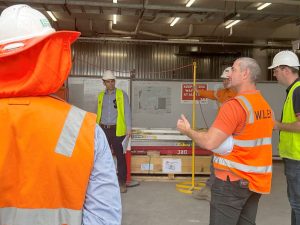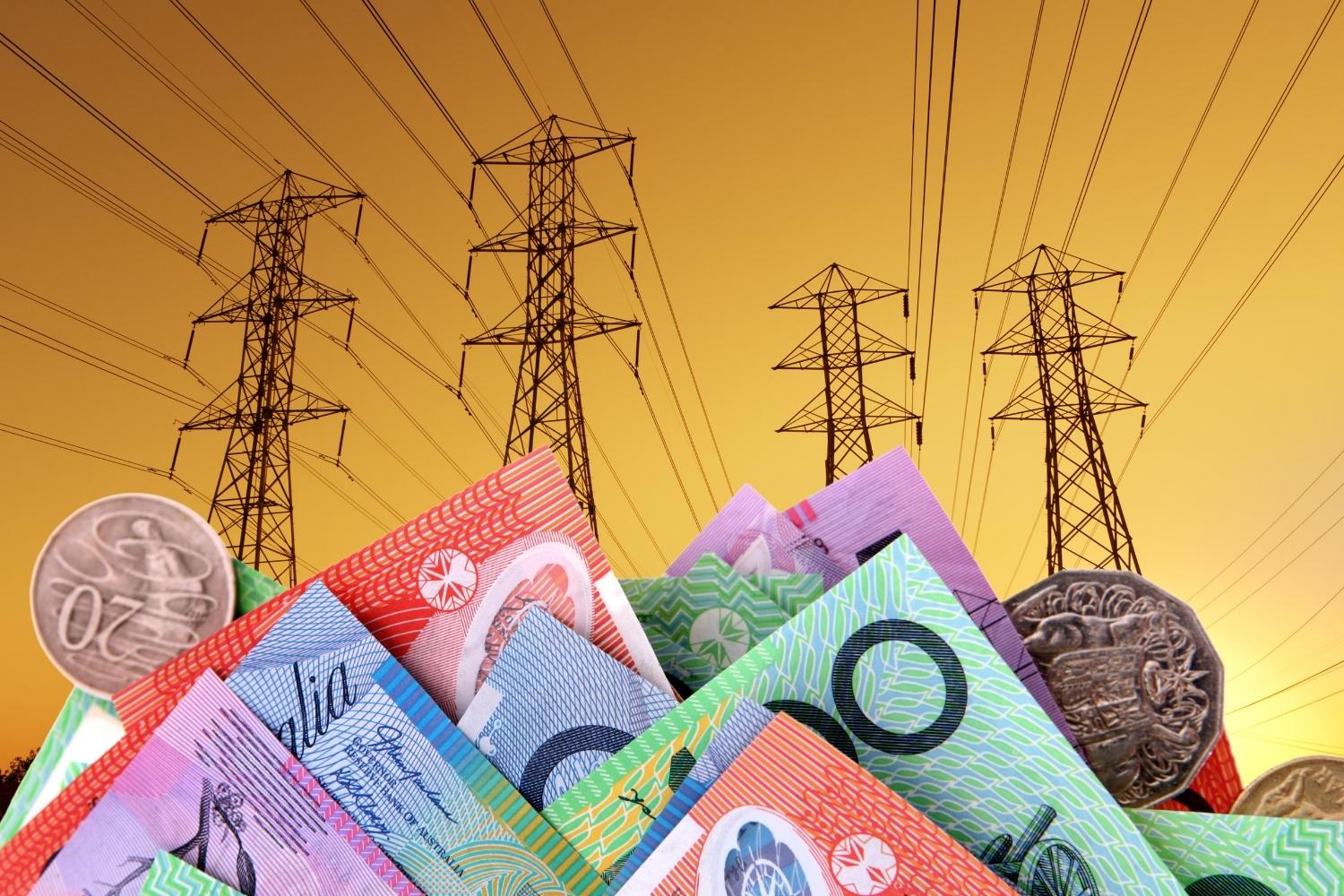Wiley’s resident bioenergy expert, Heath Barker spent last week at the Bioenergy Strong 2019 Conference in Brisbane learning about the significant opportunity that exists in Australia for Bioenergy, biogas bioeconomy, and innovations in this space. Here he shares his recap of the event and top takeaways.
Bioenergy Strong Conference Day 1
There were some interesting talks today from the speakers. Here are a few of my key takeaways:
Annette Cowie – Principal Climate Researcher at NSW Department of Primary Industries, shared a quick summary of the importance to halt, and reverse climate change and reminded the audience of the current bush fire events ripping through Australia and the recent flooding events and that these are examples of the consequences of inaction.
Abel Guterres – Timor-Leste’s Ambassador to Australia, explained the RESPECT project that they are about to undertake to monetise plastic waste with the goal to be the first plastic neutral country. He shared a video of Sir David Attenborough who explained the massive impacts that plastics are having on our waterways and his full support of the initiative. Learn more HERE.
Patrick Gruber – CEO at Gevo was passionate about two things: substituting liquid fossil fuels for biofuels and doing this with smart crop management. He said that bio-farms (like bagasse, agave) need to embrace carbon-negative growing approaches that trap carbon in the soil while making proteins and fuels. He believes that with the right techniques, a 1:1 ratio of fossil and biofuel could be a carbon-neutral product.
Henry Anning – CEO of ResourceCo Energy Systems, shared a bit about one of their projects where they do something really interesting: They make customised biofuels from various waste streams. Unlike most waste-to-energy facilities that need to be really strict about the quality and contents of their feedstock, ResourseCo will take the unwanted waste streams and ‘upgrade’ it by separating the metals, plastics and organics to then sell the refined waste as fuel replacements for heavy industry. Henry noted a great point in his talk about the way ‘bioenergy’ is supported in Australia. The slide says it best:
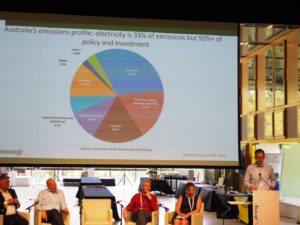
Bio-produced hydrogen was an interesting topic to be discussed at the bioenergy conference. Geoff Ward, the CEO of Hazer Group Limited, spoke about the opportunity to make hydrogen and graphite from biogas. The exciting thing here is that the current methods of making hydrogen produce very large carbon emissions while Hazer’s method (using biogas), claims that 100-150 tonnes of emitted CO2 will be abated for every tonne of hydrogen produced.
Bernadette McCabe challenged the cost of hydrogen production when compared to biomethane production (biogas that’s been cleaned up to a natural gas equivalent product). She thinks that it is something that needs to be further investigated, especially considering it is so high on the ARENA radar.
I’ve saved the best for last. ARENA’s BD spokesman Matt Walden shared the recent findings and activities that they have been driving. The key item on the agenda was today’s announcement that ARENA will be preparing a roadmap for the bioenergy sector that quantifies opportunities where Australia has a competitive advantage to inform future investment and policy decisions. You can look at it HERE. They have committed to publishing this roadmap by mid-2020. I for one can’t wait to see what it contains and hope to have the opportunity to provide input into its development and content.
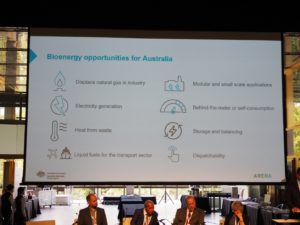
Day 2 at the Bioenergy Conference with some more great speakers.
My highlights were:
Inge Johansson – researcher at Research Institutes of Sweden talked about a great bioenergy hub that takes waste from the surrounding areas and generates energy (heat and electricity) in Copenhagen. Normally facilities like this are set away from highly populated areas, but this one is right in the guts of the city and offers a ski slope, cafe and parklands on its roof! This is one of the most advanced and waste to energy facility in the world.
Sylvain Bertrand – CEO at Airex Energy spoke about a biofuel that they are creating called biocoal. The product is made from forestry waste through a torrefaction process (Google it if you’re interested in how it works) and results in a pellet that has very similar properties to that of coal.
It’s taken 15years to develop the technology for creating biocoal efficiently. A few of the benefits of this product over alternative biofuels:
This would allow a coal-fired power plant to remain in operation with minor modifications to burn biocoal instead of traditional coal. This is a much cheaper solution than decommissioning and building a new process.
Biocoal is water-resistant unlike wood pellets and other similar biofuels, so storage is cheaper and product quality is more consistent in varying environmental conditions.
There are also challenges that come with biocoal that will need to be addressed:
Biocoal is about 20% more expensive than standard coal worldwide, but that is the price we need to come to expect to ensure sustainable practices are adopted
The biocoal industry is facing a ‘chicken and egg’ challenge as they compete with mature fuel sources. As an industry, they need to create enough product to meet the demand and offer production redundancy so they need to stockpile without purchase agreements in place making cashflow challenging.
Joshua Moran – Commercial Manager at Jemena, the providers of the gas network in NSW spoke of the importance of not considering the gas network as an isolated element, but instead as part of a complete energy system. This way of thinking really resonates with me because it allows the waste of one process to become the fuel of another.
For example: The wastewater from a facility can be anaerobically treated to provide cleaner wastewater for later reuse and also generate biogas as a by-product. This gas can be utilised to create heat, power and through this process the by-product is CO2. The CO2 can be captured and fed to a glasshouse for growing crops and then the by-products of the glasshouse need to be considered for how they might be used as the feedstock for the next process. There are many other systems like this that take the by-product from one sustainable process and use it to drive another sustainable process.
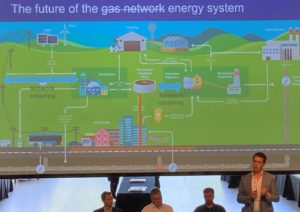
Looking Forward:
Well, that was my key takeaways from the conference this year. I’m very excited to see what the next year holds with the development of the roadmap for the bioenergy sector. I hope that this will drive policies that encourage sustainable projects and innovation throughout Australia.
Heath Baker, Senior Project Engineer – Wiley






